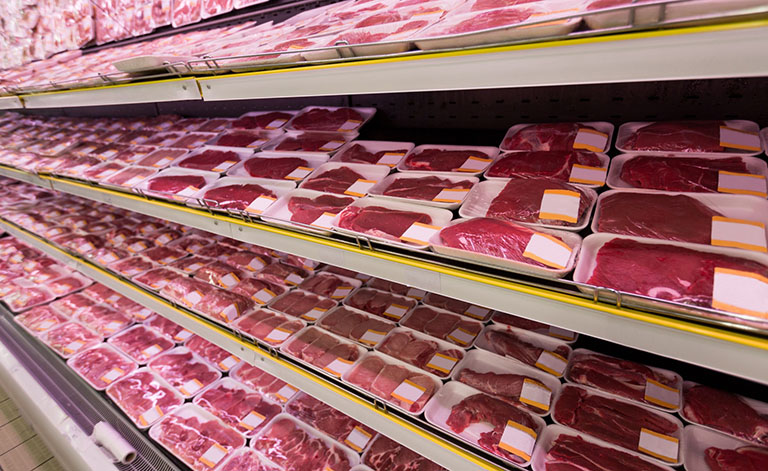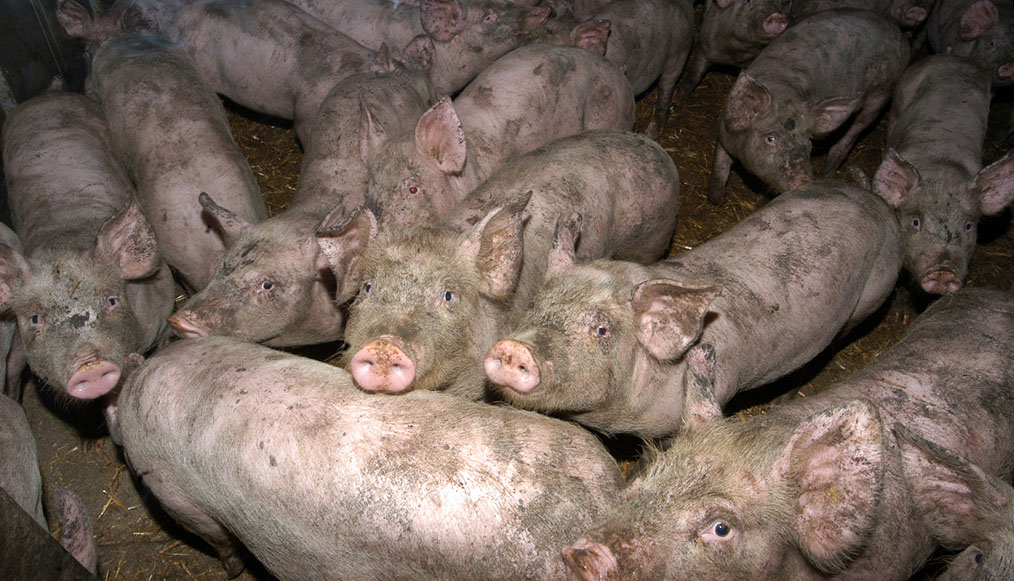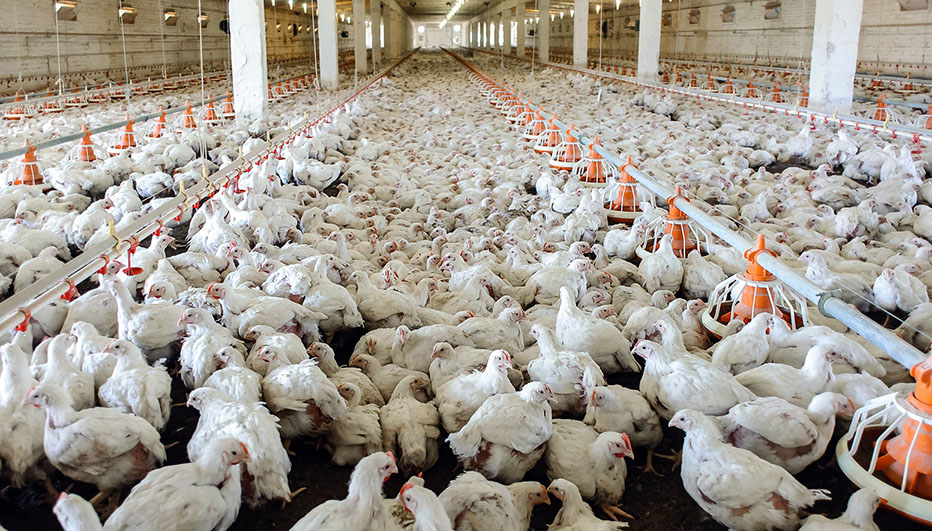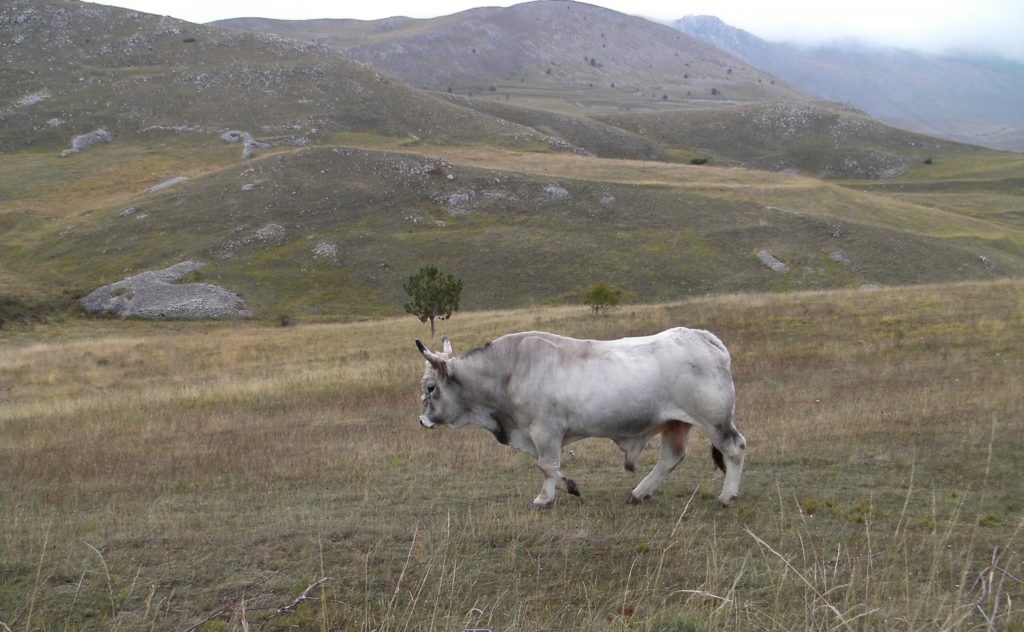
The decline of farming and “animal factories” are being promoted!
In many countries, long-standing traditions, cultures of peasants, their centuries-old customs and the independence of the profession, which has always provided most the of food for the local populations, are being sacrificed to increasingly value-added societies. This dramatic change is politically intentional and is therefore supported by adequately designed tax instruments and subsidies. It fundamentally changes the lives of many people and the infrastructures in these countries. Among the most notable changes associated with this development, are the rural exodus, the boom in services, the continuous concentration of production and trade, as well as the associated decline of farmers and the spread of intensive livestock farming. The progressively technological and mercantilised society promotes industrial livestock farming allover the world, which disregards animal´s lives and pollutes the environment. There have never been so many exploited farm animals on Earth as today! Most of them live miserably in rich industrialized countries. In the European Union alone, around 400 million livestock are constantly being detained, without counting poultry and fishes [ * ]! These are mainly pigs, cattle, sheeps and goats. As a frequent rule, the pigs are exposed defenselessly to merciless intensive animal husbandry until a violent death releases them from it.

The main reason for the increasing exploitation of livestock and the unbraked increase of animal factories is the unleashed appetite for food of animal origin. While for centuries, meat, ham, sausages and also fish were usually served only on special days, such foods are nowadays frequent components of daily consumption in many households with sufficient income. Partly responsible for this radical change in the diet of many people is the anonymization of livestock through their banishment from the perception range of consumers into totally secluded animal factories. It made posible the total instrumentalization of livestock for commercial purposes, which stands in sharp contrast to the former use of farm animals for food. The killing of farm animals, which were all personally well known to their owners before, was no routine then, but a very special event which often was restricted to religious festivals and legitimated by them.
In addition to the current frequency of the consumption of food of animal origin, their quantities consumed per head and per meal have increased dramatically, following the American model. Equally fast growing is the consumption of many cow milk products, which are included in more and more food and drinks, as well as that of chicken eggs. The worldwide exploding demand for the cheapest possible foods of animal origin led to countless highly problematic industrial live stock farms in many places, while traditional small-scale farm animal husbandries disappear rapidly.

Millions of animals are at the mercy of brutal technology!
In industrialized nations, the keeping, transporting and killing of livestock mostly happen totally secluded from public gaze. Because daily routines marked by lots of bad-smelling animal faeces, deaths and injuries would be unbearable for sensitive minds. Insights into industrial mass animal husbandry with their farm animals hidden from the sight of prying eyes and locked up in confined spaces prohibiting their natural behavior would shock too many people and jeopardize the profits! Questions about intensive livestock husbandry are therefore usually ignored by its operators and rarely answered honestly. By contrast, elaborated image campaigns and misleading advertising with pretty clichés showing farm animals in intact environments distract from the extensive information blockade in factory farming. Thus, intensive livestock keepers can continue to simply ignore vital instincts and needs of vulnerable, sensitive and intelligent vertebrates being completely at their mercy.
In this totally profit-driven system of maximum exploitation, the goal is to get as many well-salable products as possible out of the animals with the least possible amount of food, energy, space and care. This also requires extensive automation of livestock husbandry in order to reduce the very high costs of working hours in developed countries, restricting the freedom of movement of animals, which costs extra calories as well as space, and to favour the procurement of cheap, mostly imported fodder and minimize veterinary care. For higher profits, many castrations of livestock are carried out by non-trained persons and without anesthesia. The cattle and pigs are often inserted into tight steel frames to avoid injuries of the too closely packed, thus stressed and unnaturally aggressive animals and to reduce the workload in the feeding and disposal of excrements and carcasses.

In order to prevent injuries caused by too much stress and missing opportunities to avoid conflicts due to lack of space, teeth are ripped and tails amputated from many pigs, while the horns and beaks from farm animals of other species are often mutilated.
As each animal’s day of life generates additional costs, they are occasionally given pharmaceutical growth promoters to reduce the time until slaughter. Only very few farm animals reach their first year of life. Most of them are already brutally killed as young animals. Not even the right to reach adulthood, or stress-free killing is granted to them.
The circumstances of the capture and killing of those animals massively taken from the wild as food sources, such as various game, fish, frogs and snails, shellfish and crustaceans are also hidden in most cases. This is no coincidence, because they also involve unnecessary and highly unappetizing dramas.
The craving for animal food leads to a dead end!
LIFE UNION denounces factory farming making animals suffer only because of the gluttony of thoughtless people. In the strict sense, only environmentally-friendly and stress-free produced food of animal origin is ethically acceptable, healthy, sustainable and almost without problems for the time being. All livestock husbandry suitable for their production needs in addition to sufficient water, enough land for fodder crops and the distribution of animal excrements, for pastures, run-offs, stables, shelters and space that allows its animals to live out all important behaviors. With the steadily growing human population, the space required for such irreproachable livestock farming as well as for all free-range husbandry becomes an increasing problem and ultimately their limiting factor. In the southern hemisphere, free-range farming of cattle continues to be responsible for the slash-and-burn clearing of tropical forests and the depletion of their outstanding biodiversity, as well as for environmental degradations.
In just a few decades, free-range farming will reach its spatial limits. While industrial livestock farming requires much smaller areas, it is unsustainable due to multiple problems and thus, unacceptable. Accordingly, the production of food of animal origin in agriculture must settle earlier, rather than later, to a globally sustainable level. Its limitation imposes itself also because, in addition to the lack of suitable areas, bottlenecks in water would occur in case of signigicantly growing livestock populations! According to a recent study, beef consumes more than 15.000, butter over 5.500 and eggs still 3.200 liters of water per kilogram of it produced, while cereals need just over 1.600 and vegetables even less than 350 liters per kg of it produced [ ** ].

Not to be forgotten is the enrichment of the atmosphere with significant amounts of harmful greenhouse gases from livestock farming, notably methane emissions produced during the digestion process in cattle.
People should, as soon as possible, address the worsening dilemma of the environmental impact of food originating from typically farmed animals around the world. After all, the quantitative limitation of such food production imposes itself. It would be most logical and desirable to equitably distribute the food produced by farmed animals in accordance with ethical treatment of animals and the protection of the environment among all interested consumers. This could best be done through quotas, which take into account the respective consumption of land, energy and water during their production and marketing of these foods, as well as resulting emissions with negative impact. Most helpful would be an international trading system for certificates of consumption of all critical food products from farmed animals, in analogy to the current system trading emission certificates for climate affecting gases. In contrast to these, the certificates for the consumption of food products from farmed animals should be traded among the people, and not amongst enterprises, which occasionnally use loopholes to increase their profits while undermining the declared goals of the trade system. Such a trading system would reduce the demand for food from farmed animals and financially compensate vegans, but also vegetarians and other small consumers of such foodstuffs for the negative effects of the depletion of public goods by animal farming imposed on these groups, although caused by its major consumers. Considering the unequal consumption of foodstuffs of animal origin around the world, any just solution would inevitably lead to its drastic decline in rich industrialized countries. Another positive effect of a trade system for certificates of consumption of such foods would be the financial compensation of the poor around the world, who have to live with negative consequences of animal farming on the biosphere, which are mainly generated by the excessive consumption of its products by more wealthy people. For reasons of justice, part of the earnings from the trade in certificates for the consumption of such foods should be allocated to the protection of populations, species and natural habitats endangered by animal farming.
Another solution to the increasing dilemma of limited space and resources for animal farming would be to leave it to the markets to respond to the restriction of livestock populations, which will become inevitable in future. The resulting discrepancy between the demand for foodstuffs originating from farm animals and their availability would certainly lead to price increases, which would put financial pressure in particular on the people consuming much meat and derived foods, or push them to reduce their unbearable levels of consumption of such products. People with low purchasing power would be even more disadvantaged by a reduced supply of affordable food of animal origin, than they are today and would increasingly have to do without meat, foods derived from it and diverse dairy products. While this solution would not be socially balanced, it has the advantage of not requiring a separate, relatively complex administration and is therefore much more likely to come up in our unjust society, subjugated to the laws of the markets.
The third conceivable solution could sooner or later, become indispensable for several reasons, and may even impose itself in this century, if no other solution is adopted in time. However, it is extremely unlikely to be accepted in the near future because it runs counter to religious taboos, political dogmas and economic interests, deeply questions them and for that reason, lacks political correctness and remains very unpopular for the time being. This solution generally aims at the sustainable compatibility of the human use of resources with the limited capacities of the finite biosphere, and may in the end even lead to birth control applied to humanity, in order to reduce its levels of consumption, which could no longer be sustainable.
Cultivated meat for a sustainable meat culture!
It’s high time for a new, respectful relationship of consumers of foods, and other products from animal origin, with the animals, that produce them, as well as for a critical review of the human diet and its implications.
Livestock meat is by far the most problematic part of human food, not only because of the quantities consumed worldwide. The problems in this context are also related to the mostly brutal husbandry conditions for sensitive vertebrates from birth to their early death. In the case of livestock meat, ethical questionability is compounded by ecological problems due to the very high consumption of resources. For these reasons, the production of livestock meat can not be arbitrarily extended, but should be in the medium-term commuted to a sustainable level respecting both the environment and animal welfare. Incidentally, this applies especially to all products that require the killing of animals, including meat and other parts of animals taken from the wild, as well as all fish products, regardless of whether they are from wild caught, or farmed fish.
Against this background and because a decline both in the widespread and rapidly growing craving for farm animal meat and fish, and in the abstinence of meat and fish are highly unrealistic until further notice, solutions to these problems must be found soon. Though algae and insects undoubtedly have immense potential as food and are already gaining in importance, “die-hard” consumers of meat and fish products will not want to wholeheartedly follow the transition to these alternative food sources. As a realistic option for the sustainable satisfaction of the future demand for meat products of livestock and fish by the world population growing soon to ten billion people, only appears the combination of complementary production methods. On the one hand, environmentally acceptable livestock husbandry in accordance with bio- and ecocentric ethics, and such fish catches and farming of fishes, could meet the demand of exigent customers for high-quality meat and products made from naturally grown livestock and fishes in reasonable quantities at correspondingly high prices.

On the other hand, inexpensive and flawless meat, fish and derived foods could be produced with biotechnological methods, thus contributing to healthy and sustainable nutrition of a growing population.
That is why LIFE UNION is striving at the same time for an environmentally sound and animal-friendly turnaround in livestock farming, fishing and hunting, as well as for a meat and fish production based on cell cultures. Thanks to the latter, customized cultivation of various types of meat and fish of different species, totally free from suffering and environmental impacts, is coming within reach of human nutrition for the first time ever. Thus, the huge demand for tasty, hygienic and inexpensive meat and fish products derived therefrom, could be met thanks to pain-free cell cultures. In the future, small cell culture devices could produce various hams, steaks, schnitzel etc. with desired proportions of fat, muscle and connective tissue, as well as equally cultured fish, according to personal preferences at home, without causing any harm to animals or the environment.
LIFE UNION wants to anticipate this foreseeable development for reasons of providing the growing human population healthy and sustainable food and promoting at the same time animal, nature and environmental protection. To this end, it seeks the active participation of dedicated scientists, gifted technicians and tinkerers, in order to win them over the charitable development of animal meat cultures, without any patent rights and other socially and ecologically questionable obstacles.
Thanks also to your support, such innovative, for the first time pain-free as well as environment-friendly and therefore highly civilized, meat and fish eating cultures could soon emerge in collaboration with research institutes from different countries. This shall save year after year billions of animals untold suffering, miserable lives and mostly cruel deaths during youth.
References:
[*]: eurostat – Agriculture, forestry and fishery statistics (2014 edition)
[**]: Water Footprint Network
